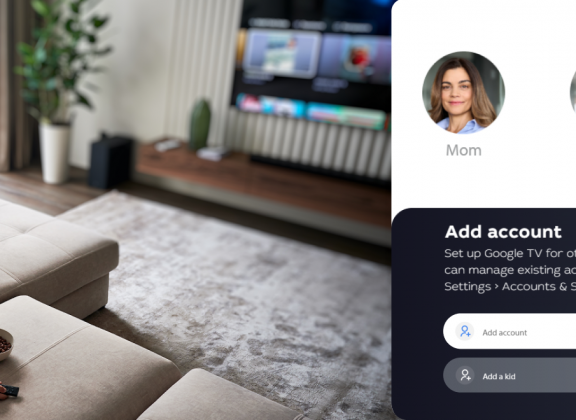More and more families are turning to IPTV (Internet Protocol Television) due to its flexibility and broad range of channels. However, this convenience brings up an important concern: how to ensure IPTV safe viewing for kids and prevent them from accessing inappropriate material?
This article will walk you through how to set up parental control on IPTV, including how to block channels on IPTV using the built-in tools and settings available on most devices.
Why parental control matters
IPTV services typically offer access to a massive variety of programming, including content that is not suitable for children. While the extensive selection is a key benefit, it also raises the risk of children encountering adult-oriented shows by accident. Fortunately, with IPTV parental settings such as content restrictions and a mature content filter, you can build a kid-safe TV environment and restrict access to unsuitable material.
Thanks to IPTV parental settings that enable content restrictions and a mature content filter, you can create a kid-safe TV environment, ensuring your children don’t access shows or movies meant for adults. By implementing IPTV parental control, you can establish age restriction IPTV policies and limit access to specific channels or content categories.
Activating IPTV parental control enables you to enforce age restriction IPTV settings and limit visibility of specific channels or categories of content. It gives parents the ability to protect their children from inappropriate programming, apply age-appropriate viewing limits, and shape a viewing experience that suits each member of the family. These tools also offer flexibility, letting adults guide children’s TV usage without the need for constant supervision.
Keep in mind that most systems require a PIN code to enable or manage these restrictions. When you first activate IPTV, it’s best to set a secure, hard-to-guess PIN code that your children won’t easily figure out.
Available parental control features
The scope of parental control options will vary depending on your IPTV hardware and service provider. Some services offer only a basic PIN lock, while others provide advanced features such as a parental lock on IPTV box devices. These may include the ability to create user profiles with different permissions or to automatically block channels flagged as 18+. These features help ensure IPTV safe viewing for kids, minimizing the chance of exposure to inappropriate material.
If your IPTV provider supports multiple user profiles, each household member can have a separate login. When configured for a child, these profiles can automatically hide content meant for adults, offering a safer, age-tailored experience.
How to set up parental control: step-by-step
Open the settings menu: On your IPTV set-top box or app, navigate to the “Settings” section. Look for the option labeled “Parental Control” or IPTV parental settings.
Apply age restrictions: Use the age restriction IPTV feature to determine which content should be blocked based on age ratings. For instance, you can restrict access to anything rated “18+”.
Block specific channels: Choose the channels you want to restrict access to. Once selected, these channels will require the PIN to be accessed, helping you block channels on IPTV that are inappropriate for younger viewers.
Enable additional filters: Some IPTV systems allow for keyword or genre-based filtering. If available, use this function to automatically block content that includes certain themes or tags.
Save changes and confirm: After finishing your configuration, save the changes. Depending on your device. A restart may be required for the new settings to take effect.
After setup: what’s next?
Once parental controls are in place, it’s a good idea to check in occasionally and make sure everything is working as expected. This is especially important after system updates from your IPTV provider. Regularly updating your PIN code adds another layer of protection, reducing the chance your child might discover it. If your device supports it, reviewing watch history can help you ensure the rules are being followed.
In addition to the technical side, open communication plays a big role, and we’d always recommend talking with your children about why some content isn’t suitable. Explaining these limits helps them understand the reasoning and reduces the temptation to bypass restrictions. Ideally, technology and conversation should work together to build a healthy viewing environment.
Helpful tips and common mistakes
One key recommendation is to keep your system updated. A child lock for IPTV works most effectively when software is up to date—outdated firmware may have security issues or bugs that affect your parental controls. If you find that certain restrictions aren’t functioning properly, check for updates or contact your provider for support.
Avoid using obvious PIN codes like “0000” or “1234,” and never share the code with children. If you forget your code, you may need to reset the device or call customer support for assistance.
Some IPTV services offer time-based controls, allowing you to limit how many hours per day your child can watch TV. This not only blocks access to unsuitable content but also helps manage overall screen time. It’s also a good practice to regularly test your settings, since channels and their ratings can change over time.
By properly configuring IPTV parental control, you can create a secure viewing environment tailored for your children. Whether you’re using PINs, filters, or profile-based access, these features ensure IPTV safe viewing for kids, encouraging responsible screen habits while also giving you peace of mind.
